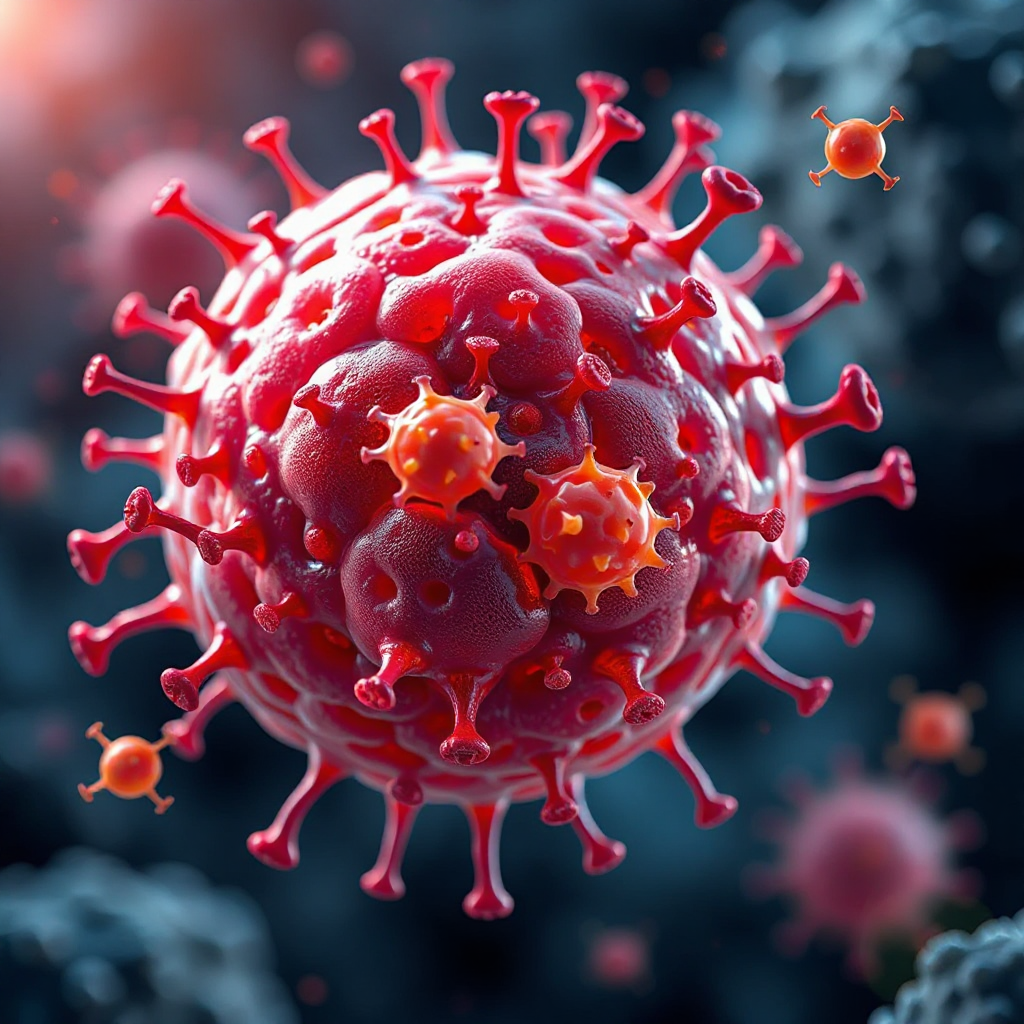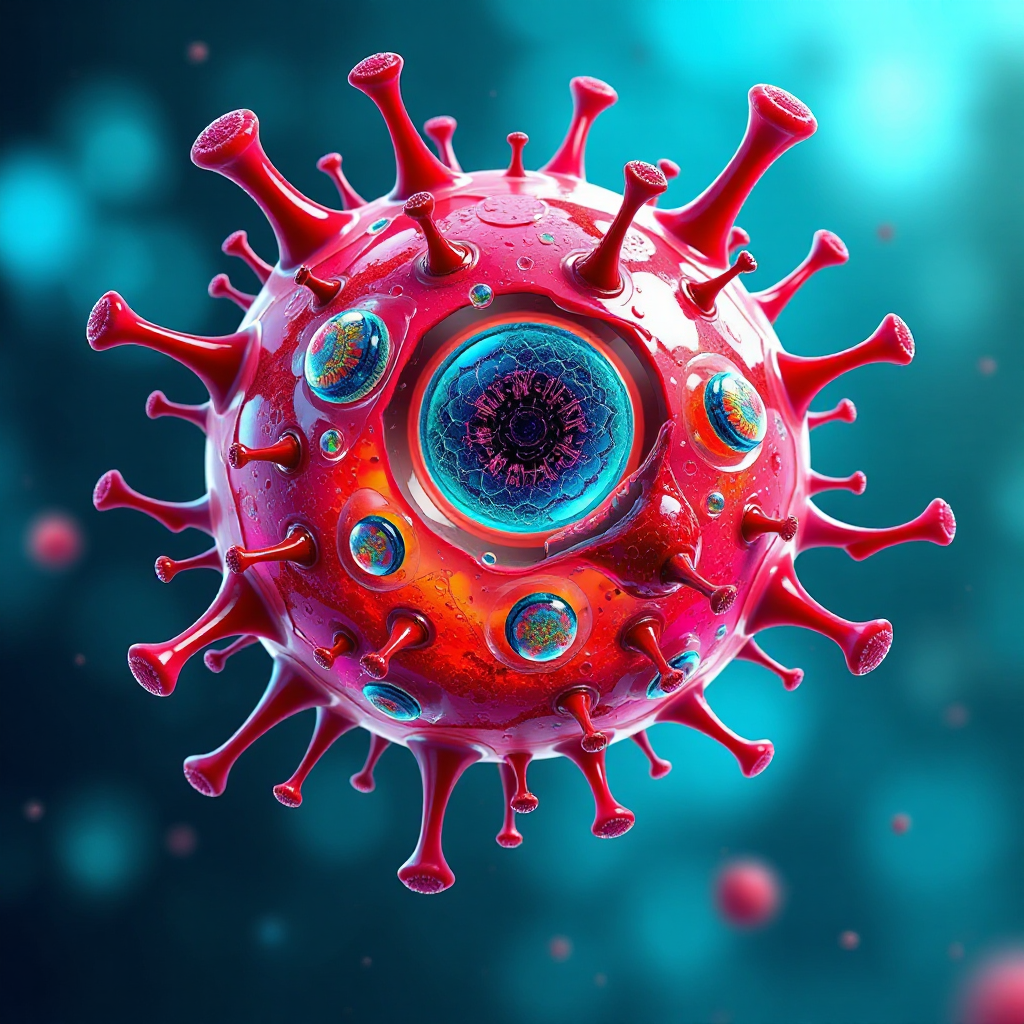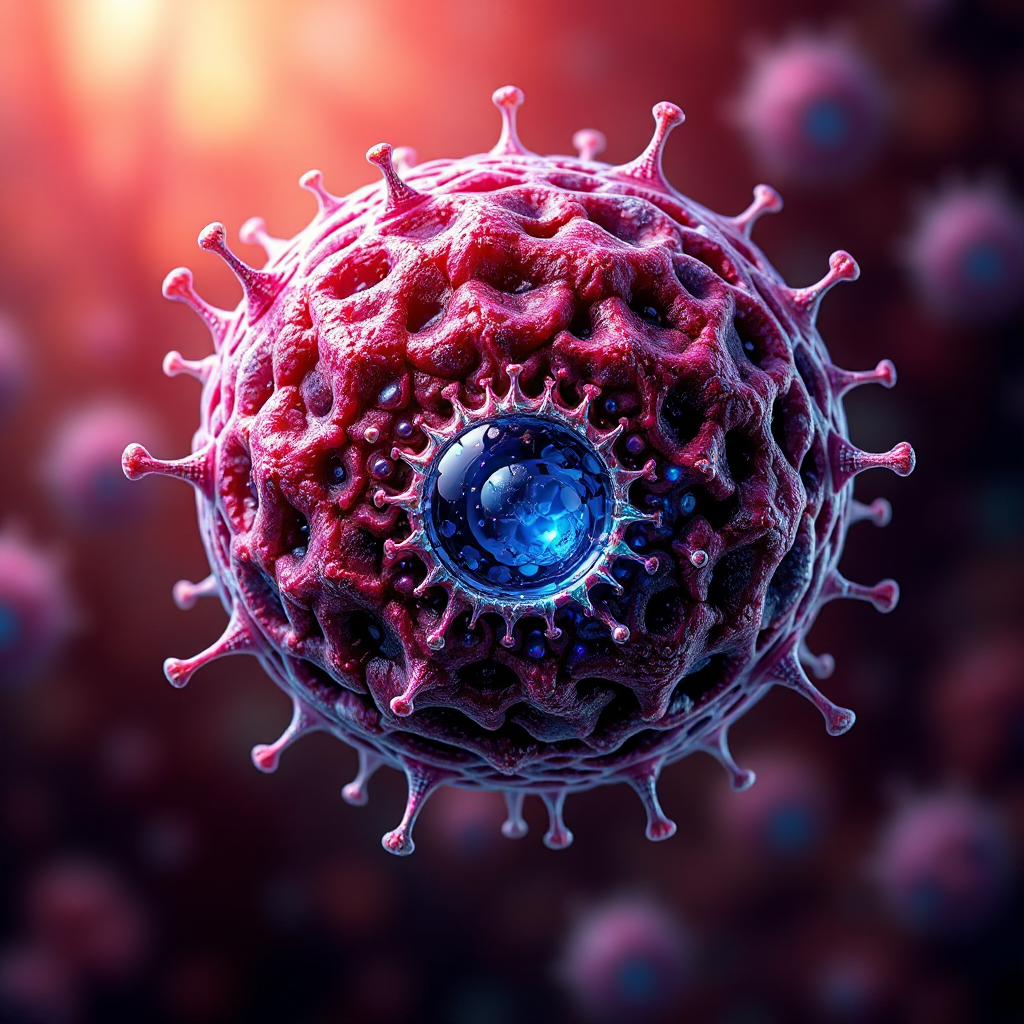Sertoli Cell Tumor Traits and Their Behavior

Sertoli cell tumours are rare sex cord-stromal tumors that arise in the testes or ovaries. These tumors, known as Sertoli cell tumours, can be either benign or malignant, with the majority of cases presenting as stage I and typically affecting only one side. They are more commonly seen in young females, including children, and may result in early sexual development. In certain instances, Sertoli cell tumours produce male hormones, leading to symptoms such as voice deepening, increased hair growth, and irregular menstrual cycles in women. Although most Sertoli cell tumours are benign, approximately 11% of stage I cases exhibit concerning histologic features, underscoring their potential health implications.
Key Takeaways
Sertoli cell tumors can be harmless or cancerous. Most are found early at stage I. Finding them early helps with better treatment.
These tumors can cause hormone problems, leading to big body changes, especially in women. Spotting signs early can make treatment work better.
Surgery is the main way to treat these tumors. It gives the best chance to get better. Regular check-ups are needed to watch for the tumor coming back.
Knowing risks like tumor size and dead tissue helps doctors plan treatment and predict outcomes.
If someone has odd symptoms, like swollen testicles or hormone changes, they should see a doctor quickly for help.
Understanding Sertoli Cell Tumors
What Are Sertoli Cell Tumors
Sertoli cell tumors are rare growths that originate from Sertoli cells, which are part of the sex cord-stromal group of tumors. These tumors can develop in the testes or ovaries and may exhibit either benign or malignant behavior. While most Sertoli cell tumors remain localized and non-threatening, a small percentage display aggressive characteristics, including the potential to spread to other parts of the body. Their rarity and diverse presentations make them a significant topic in medical research and clinical practice.
Origin and Role of Sertoli Cells
Sertoli cells play a crucial role in the reproductive system. In males, they are located in the seminiferous tubules of the testes, where they provide structural support and nourishment to developing sperm cells. In females, Sertoli cells are present in the ovaries, although their function is less prominent. Dysfunction in these cells can lead to the formation of Sertoli cell tumors, which may disrupt normal hormonal balance. For instance, some tumors produce male hormones, causing symptoms such as a deepened voice and increased facial hair in women. This hormonal activity highlights the importance of Sertoli cells in maintaining physiological equilibrium.
Types and Prevalence of Sertoli Cell Tumors
Sertoli cell tumors exhibit various patterns and characteristics. The most common microscopic pattern is tubular, observed in all cases. Other patterns include cords or trabeculae, diffuse, pseudopapillary, and retiform. Rare forms, such as lipid-rich or clear non-foamy tumors, also exist. A majority of these tumors are diagnosed at stage I, with only a few cases progressing to stages II or III. Sertoli cell tumors are more frequently seen in young females and children, often presenting with symptoms like early sexual development or hormonal imbalances. The diversity in tumor types and their clinical manifestations underscores the complexity of diagnosing and managing these growths.
Characteristics of Sertoli Cell Tumors

Physical and Histological Features
Sertoli cell tumors exhibit distinct physical and microscopic characteristics. These tumors are typically solid, yellow, and unilateral. Microscopically, they predominantly display a tubular pattern, though other arrangements such as cords, trabeculae, diffuse, pseudopapillary, and retiform patterns may also appear. In rare cases, the tumors form islands or alveolar structures. The tubules can be solid or hollow, often separated by delicate septa.
The cytoplasm of Sertoli cell tumors varies from pale to densely eosinophilic. Some tumors contain prominent foamy cytoplasm, indicating a lipid-rich composition. While most tumors show mild nuclear atypia and low mitotic activity, a few cases exhibit brisk mitotic activity and significant cytologic atypia. These histological features play a crucial role in determining the tumor's behavior and potential malignancy.
Benign vs. Malignant Sertoli Cell Tumors
Most Sertoli cell tumors are benign and present as stage I, remaining localized and non-threatening. However, approximately 11% of stage I tumors display worrisome histological features that may indicate malignancy. The table below highlights key differences between benign and malignant Sertoli cell tumors:
Feature | Benign Tumors | Malignant Tumors |
|---|---|---|
Size | Usually smaller than 5 cm | Often 5 cm or greater |
Histological Features | Bland microscopic features | Necrosis, nuclear atypicality, vascular invasion, brisk mitotic rate |
Clinical Behavior | Generally benign | Higher likelihood of metastasis |
Malignant tumors often exhibit cytologic atypia, brisk mitotic activity, and tumor necrosis. These features increase the risk of recurrence and metastasis, making early detection essential.
Hormonal Activity and Effects
Sertoli cell tumors frequently secrete hormones, particularly androgens like testosterone. This hormonal activity can lead to significant physiological changes. For example, women with these tumors may experience a deepened voice, facial hair growth, clitoral enlargement, and cessation of menstrual periods. The table below illustrates the hormonal secretion levels of Sertoli cell tumors compared to normal ovarian stroma:
Hormone | Tumor Secretion (pg/mg tissue) | Normal Ovarian Stroma (pg/mg tissue) | p-value |
|---|---|---|---|
Testosterone | 527 +/- 168 | 48 +/- 29 | < 0.001 |
Androstenedione | 1188 +/- 400 | 40 +/- 10 | < 0.001 |
Dehydroepiandrosterone | 419 +/- 132 | 73 +/- 25 | < 0.004 |
These hormonal imbalances highlight the importance of recognizing the systemic effects of Sertoli cell tumors. Proper diagnosis and management can mitigate these symptoms and improve patient outcomes.
Biological Behavior of Sertoli Cell Tumors
Growth Patterns and Metastasis
Sertoli cell tumors exhibit diverse growth patterns and sizes, ranging from 0.8 to 30 cm, with most measuring between 4 and 12 cm. These tumors are typically unilateral, solid, and yellow in appearance. The predominant growth pattern is tubular, although other arrangements such as cords, diffuse, and trabecular are also observed. Most stage I Sertoli cell tumors are clinically benign, with only 11% showing concerning histological features that may suggest a worse prognosis. However, higher-stage tumors carry a greater risk of metastasis. For instance, two out of three patients with stage III disease developed splenic metastases within two years of diagnosis. This highlights the importance of early detection and monitoring, especially in advanced cases.
Hormonal Secretion and Associated Symptoms
Sertoli cell tumors often secrete hormones, particularly androgens, which can lead to noticeable physical changes. Symptoms associated with this hormonal activity include:
A deepened voice
Facial hair growth
Enlargement of the clitoris
Reduction in breast size
Cessation of menstrual periods
Pain in the lower abdomen
These symptoms can significantly impact a patient’s quality of life. Recognizing these signs early can aid in timely diagnosis and treatment, minimizing the tumor's systemic effects.
Risk Factors for Malignancy
Certain factors increase the likelihood of malignancy in Sertoli cell tumors. These include:
Risk Factor |
|---|
Age |
Tumor Size |
Necrosis |
Tumor Extension to the Spermatic Cord |
Angiolymphatic Invasion |
Mitotic Index |
Larger tumors, necrosis, and angiolymphatic invasion are particularly concerning. A high mitotic index and tumor extension to adjacent structures also indicate a higher risk of malignancy. Understanding these risk factors helps clinicians assess prognosis and tailor treatment strategies effectively.
Symptoms and Health Impacts
Symptoms in Males
Sertoli cell tumors in males often present with subtle or nonspecific symptoms. These tumors may cause testicular swelling or a painless lump in the testes. Some individuals experience discomfort or a dull ache in the lower abdomen or groin. In rare cases, hormonal imbalances occur, leading to feminizing effects such as breast enlargement (gynecomastia) or a reduction in body hair. These symptoms arise when the tumor disrupts normal hormone production, emphasizing the importance of early medical evaluation for any unusual changes in the testes.
Symptoms in Females
In females, Sertoli cell tumors frequently produce androgens, leading to noticeable physical changes. Common symptoms include:
Enlargement of the clitoris
Increased facial hair
Reduction in breast size
Stopping of menstrual periods
Pain in the lower pelvic area
These symptoms result from the tumor's hormonal activity, which disrupts the body's natural balance. Early recognition of these signs can aid in prompt diagnosis and treatment, minimizing the tumor's impact on overall health.
Potential Complications and Health Risks
Sertoli cell tumors, though rare, can lead to significant health risks if left untreated. Malignant tumors may metastasize to other organs, such as the spleen or lymph nodes, complicating treatment and reducing survival rates. Hormonal imbalances caused by these tumors can also result in long-term endocrine disorders, affecting reproductive health and overall well-being. Additionally, large tumors may compress nearby structures, causing pain or functional impairments. Early detection and intervention are crucial to prevent these complications and improve patient outcomes.
Diagnosis and Treatment of Sertoli Cell Tumors

Diagnostic Methods
Imaging Techniques
Ultrasound plays a critical role in diagnosing Sertoli cell tumors. These tumors exhibit variable ultrasound findings, appearing as solid, multilocular solid, or cystic masses. Studies reveal that 58% of Sertoli-Leydig cell tumors (SLCTs) present as solid and cystic, 38% as solid, and only 4% as purely cystic. This variability highlights the importance of ultrasound in enhancing preoperative diagnostic accuracy. Its ability to identify structural differences makes it a key tool in the early detection of these tumors.
Biopsy and Histological Analysis
Histological analysis remains essential for confirming the diagnosis of Sertoli cell tumors. These tumors often display diverse growth patterns, such as tubular or diffuse arrangements, which can complicate differentiation from other neoplasms. Immunohistochemical markers like EMA, inhibin, and chromogranin are crucial for distinguishing Sertoli cell tumors from mimicking conditions, such as seminomas or endometrioid carcinomas. Accurate histological evaluation ensures proper diagnosis and guides treatment planning.
Treatment Options
Surgical Removal
Surgery is the primary treatment for Sertoli cell tumors. Testis-sparing surgery (TSS) is effective for localized tumors, offering low recurrence rates. For metastatic cases, metastasectomy can achieve complete remission in some patients. Surgical intervention remains the cornerstone of treatment, providing the best outcomes for both benign and malignant cases.
Radiation and Chemotherapy
Radiation and chemotherapy are less commonly used but may be considered for advanced or metastatic Sertoli cell tumors. Systemic treatments alone rarely result in long-term remission. However, they may complement surgical approaches in managing aggressive or recurrent tumors.
Factors Influencing Treatment Decisions
Several factors influence the choice of treatment for Sertoli cell tumors:
Age of the patient
Tumor size and stage
Presence of necrosis
Tumor extension to the spermatic cord
Angiolymphatic invasion
Mitotic index
Patients with metastatic disease face a median life expectancy of 20 months. Surgery offers the best chance for remission, even in advanced cases. Understanding these factors helps clinicians tailor treatment plans to individual needs, improving patient outcomes.
Prognosis and Long-Term Outlook
Survival Rates and Outcomes
The prognosis for patients with Sertoli cell tumors depends on the tumor's stage and malignancy. Early-stage tumors generally have favorable outcomes. For instance, stage I Sertoli cell tumors exhibit a 93% 1-year survival rate and a 77% 5-year survival rate. In comparison, Leydig cell tumors at the same stage show slightly higher survival rates, with 98% at 1 year and 91% at 5 years.
Tumor Type | Stage | 1-Year Survival Rate | 5-Year Survival Rate |
|---|---|---|---|
Leydig Cell Tumors | I | 98% | 91% |
Sertoli Cell Tumors | I | 93% | 77% |
Patients with localized tumors treated surgically often achieve long-term remission. However, metastatic cases present a more challenging prognosis. Surgery remains the most effective treatment for advanced disease, as systemic therapies alone rarely result in lasting remission.
Importance of Early Detection
Early detection plays a critical role in improving outcomes for Sertoli cell tumors. Identifying the tumor at an early stage allows for timely surgical intervention, which significantly reduces the risk of metastasis. Patients diagnosed early often avoid complications associated with advanced disease, such as hormonal imbalances and organ damage. Regular medical check-ups and awareness of symptoms, such as testicular swelling or hormonal changes, can aid in early diagnosis. Early intervention not only improves survival rates but also enhances the patient’s quality of life.
Monitoring and Follow-Up Care
Follow-up care is essential for patients treated for Sertoli cell tumors. Regular cross-sectional imaging helps monitor for recurrence or metastasis. The frequency and type of follow-up depend on the tumor's histological subtype. Patients who undergo testis-sparing surgery typically experience low recurrence rates. However, those with metastatic disease require closer monitoring due to their poorer prognosis.
Key follow-up practices include:
Cross-sectional imaging to detect recurrence.
Stratified follow-up schedules based on tumor subtype.
Long-term outcomes vary. While surgery often leads to remission, metastatic cases remain difficult to manage. Comprehensive follow-up care ensures early detection of complications and improves overall survival.
Sertoli cell tumors exhibit unique traits, including their potential to be benign or malignant and their ability to secrete hormones. These characteristics influence their biological behavior and impact on health. Early diagnosis plays a critical role in improving outcomes by enabling timely treatment and reducing complications.
Tip: Individuals noticing unusual symptoms, such as hormonal changes or testicular swelling, should seek medical advice promptly. Consulting healthcare professionals ensures proper evaluation and care, which can significantly improve quality of life and prognosis.
Understanding these tumors empowers patients to make informed decisions about their health.
FAQ
What causes Sertoli cell tumors to develop?
Sertoli cell tumors arise from abnormal growth of Sertoli cells, which support sperm development in males and have a less prominent role in females. The exact cause remains unclear, but genetic mutations and hormonal imbalances may contribute to their formation.
Are Sertoli cell tumors hereditary?
Most Sertoli cell tumors are not hereditary. However, some cases may occur in individuals with genetic syndromes, such as Peutz-Jeghers syndrome. Regular medical check-ups can help detect tumors early in individuals with a family history of related conditions.
Can Sertoli cell tumors affect fertility?
Sertoli cell tumors can impact fertility, especially in males. Tumors in the testes may disrupt sperm production or hormone levels. Early diagnosis and treatment improve the chances of preserving fertility and overall reproductive health.
How are Sertoli cell tumors different from other testicular or ovarian tumors?
Sertoli cell tumors belong to the sex cord-stromal tumor group. Unlike germ cell tumors, they originate from supportive tissue rather than reproductive cells. Their hormonal activity and histological features distinguish them from other tumor types.
What should individuals do if they suspect symptoms of Sertoli cell tumors?
Individuals noticing symptoms, such as testicular swelling or hormonal changes, should consult a healthcare professional immediately. Early evaluation ensures accurate diagnosis and timely treatment, reducing the risk of complications and improving outcomes.
Note: Early medical attention is crucial for managing Sertoli cell tumors effectively. Regular check-ups and awareness of symptoms can save lives.
See Also
Exploring Leydig Cell Tumors: Causes and Insights
Insights Into Large Cell Lung Carcinoma With Rhabdoid Features
A Closer Look at Malignant Fibrous Histiocytoma and Osteosarcoma
